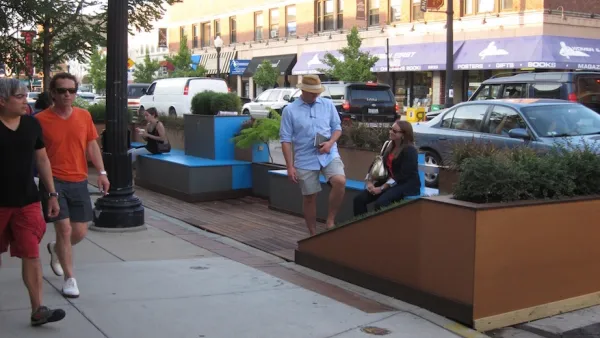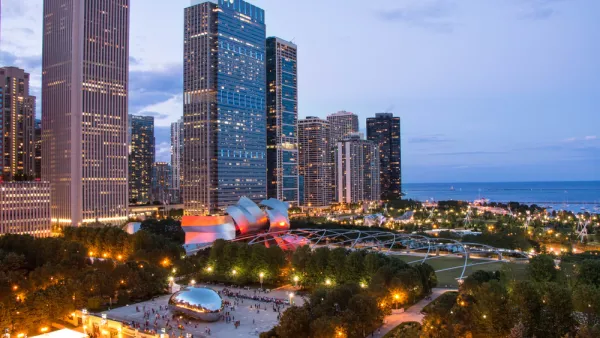Architecture Critic Blair Kamin wants more from Make Way for People, Chicago Mayor Rahm Emanuel's placemaking program, and finds faults with the Lincoln Hub as an example of tactical urbanism.
Chicago Tribune Architecture Critic and Pulitzer Prize winner Blair Kamin provides a critical take on the city of Chicago's efforts to create people places around the city.
Three years after its launch in 2012, according to Kamin, "the innovative program, a highly visible part of Mayor Rahm Emanuel's push to make car-dominated city streets more attractive to pedestrians, remains an underachiever."
Kamin blames the underwhelming performance both on quality and quantity. On the latter, Chicago has managed to create only six "people spots"—compared to more than 50 parklets in San Francisco. Moreover, adds Kamin, the design of Chicago's people spots "ranges from so-so to striking….Most are dressed-up sidewalk cafes — long on the cliche of tables and chairs, short on creativity."
Kamin also does a good job laying out the case for placemaking efforts like those supported by Make Way for People, even if the program could achieve more tangible results for its cause. For instance, Kamin notes that a study by the Metropolitan Planning Council and Sam Schwartz Engineering found positive survey results from businesses located near the program's initial projects. In another show of support for the concept, Kamin also recommends ways Chicago could accelerate the program's rate of success.
In a separate article published in concert with the Make Way for People criticism, Kamin also provides a withering critique of the Lincoln Hub project, which transformed an intersection on the North Side with polka dots and bollards to make space for pedestrians but has provoked ire from locals and commuters. Kamin cites the Lincoln Hub as an example of tactical urbanism, noting its success in other cities, like New York, but wondering whether it can achieve similar positive effects in Chicago.
FULL STORY: Chicago's people spaces program off to a slow start

National Parks Layoffs Will Cause Communities to Lose Billions
Thousands of essential park workers were laid off this week, just before the busy spring break season.

Retro-silient?: America’s First “Eco-burb,” The Woodlands Turns 50
A master-planned community north of Houston offers lessons on green infrastructure and resilient design, but falls short of its founder’s lofty affordability and walkability goals.

Delivering for America Plan Will Downgrade Mail Service in at Least 49.5 Percent of Zip Codes
Republican and Democrat lawmakers criticize the plan for its disproportionate negative impact on rural communities.

Test News Post 1
This is a summary

Test News Headline 46
Test for the image on the front page.

Balancing Bombs and Butterflies: How the National Guard Protects a Rare Species
The National Guard at Fort Indiantown Gap uses GIS technology and land management strategies to balance military training with conservation efforts, ensuring the survival of the rare eastern regal fritillary butterfly.
Urban Design for Planners 1: Software Tools
This six-course series explores essential urban design concepts using open source software and equips planners with the tools they need to participate fully in the urban design process.
Planning for Universal Design
Learn the tools for implementing Universal Design in planning regulations.
EMC Planning Group, Inc.
Planetizen
Planetizen
Mpact (formerly Rail~Volution)
Great Falls Development Authority, Inc.
HUDs Office of Policy Development and Research
NYU Wagner Graduate School of Public Service





























